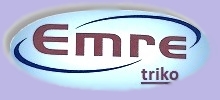
Spinoffs and sales also each have unique tax consequences in both the short and long term. In some situations, a spinoff may end up being a tax-free transaction to both shareholders and the parent company, while a sale almost always has taxes imposed upon it. Therefore, a business must, at the very least, include an input and a substantive process that together significantly contribute to the ability to create outputs. Without this, the carveout must be dealt with as a set of assets rather than a business.
Disposal account definition
Tim is a Certified QuickBooks ProAdvisor as well as a CPA with 28 years of experience. He spent two years as the accountant at a commercial roofing company utilizing QuickBooks Desktop to compile financials, job cost, and run payroll. Tim has spent the past 4 years writing and reviewing content for Fit Small Business on accounting software, taxation, and bookkeeping. Below is a break down of subject weightings in the FMVA® financial analyst program. As you can see there is a heavy focus on financial modeling, finance, Excel, business valuation, budgeting/forecasting, PowerPoint presentations, accounting and business strategy.
Comprehending Dispositions Effect on Business
PwC refers to the US member firm or one of its subsidiaries or affiliates, and may sometimes refer to the PwC network. This content is for general information purposes only, and should not be used as a substitute for consultation with professional advisors. In Business Studies, ‘disposition’ refers to the way an asset or resource is managed, especially in terms of its sale, transfer, or allocation. For instance, a company with a progressive and risk-friendly disposition might opt for a business strategy that emphasises product innovation and geographical expansion. Conversely, a company with a risk-averse disposition may prefer a consolidation strategy, seeking to strengthen its presence in existing markets rather than venturing into new ones. For instance, a business with a risk-aversive disposition is not likely to venture out into unknown markets, against the current trends, or invest substantially into a new, unproven project.

Additional Questions & Answers
- They should also consider the tax implications of the disposition, as capital gains or losses can significantly impact their overall financial situation.
- Long-term assets, for instance, may be subject to capital gains tax rates, which can differ from ordinary income tax rates.
- It may also occur when companies need to end the life of damaged or stolen assets involuntarily.
- This involves reviewing the asset’s ledger to confirm the historical cost and the accumulated depreciation to date.
- He has worked as an accountant and consultant for more than 25 years and has built financial models for all types of industries.
One is when the business sells, donates, or otherwise intentionally disposes of an asset. This may involve the receipt of a payment from a third party, and may involve the recognition of a gain or loss. A second scenario is when the loss is unintentional, such as when an asset is stolen or lost in a fire. In this case, the disposal accounting is much more likely to result in a recognized loss, since the assumption is that the asset still had some of its useful life left when it was lost. The equipment will be disposed of (discarded, sold, or traded in) on 4/1 in the fourth year, which is three months after the last annual adjusting entry was journalized. The first step is to journalize an additional adjusting entry on 4/1 to capture the additional three months’ depreciation.
StudySmarter’s content is not only expert-verified but also regularly updated to ensure accuracy and relevance. The two main types of factors that influence disposition in accounting dispositions in business are internal and external factors. Internal factors include the vision, management strategies, and experiences of the organisation.
Top 17 Bookkeeping & Accounting Tips for Small Business Owners
Financial dispositions can take several forms, such as outright sales, asset swaps, gifts, or transfers upon death. Each form of disposition comes with its unique set of financial implications, and understanding them can be key to effective portfolio management. When considering the impact a carveout or divestiture will have on a business, tax considerations must be taken into account at the beginning of the transaction rather than left as an afterthought.
It involves removing the asset from the balance sheet and recognizing any resulting financial impact. This process not only reflects operational decisions but also has implications for a company’s financial health and strategic planning. Fixed assets are long-term assets that a business holds for more than one year and are used in the production of goods and services. The disposal of fixed assets refers to the process of selling or otherwise getting rid of these assets when they are no longer needed. This gives rise to the need to derecognize the asset from balance sheet and recognize any resulting gain or loss in the income statement. Oftentimes a company might exchange one fixed asset—plus some cash—for another fixed asset.
The investor is then able to include the entire $15,000 as a tax deduction. Other types of dispositions include donations to charities or trusts, the sale of real estate, either land or a building, or any other financial asset. Therefore, always consult with accounting and tax professionals for assistance with your specific circumstances. Instances with inventory accounting policies further shed light on a company’s accounting disposition. For instance, a company using the Last-In, First-Out (LIFO) method to value inventory assumes that the last items purchased (the newest inventory) are the first ones sold. It results in a higher cost of goods sold (COGS) figure, a lower gross profit, and, most times, lower taxes.
CFI is on a mission to enable anyone to be a great financial analyst and have a great career path. In order to help you advance your career, CFI has compiled many resources to assist you along the path.


Yorum Yapılmamış